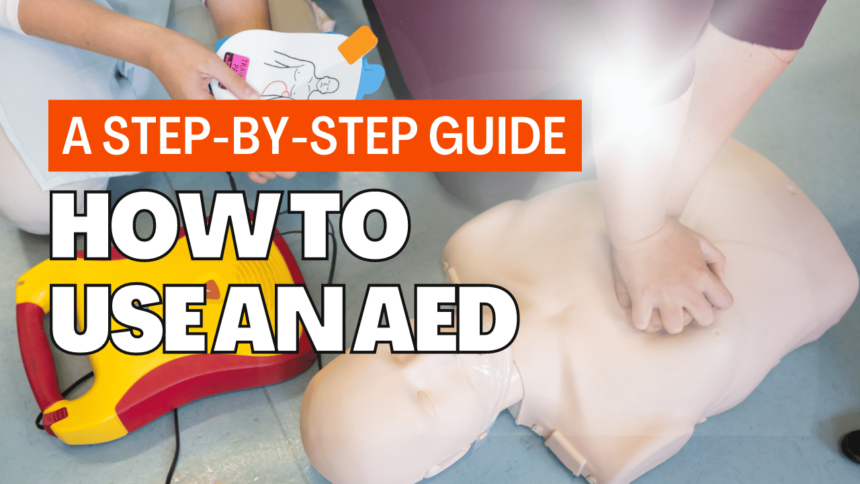A Step-by-Step Guide to Using an AED

Automated External Defibrillators (AEDs) are portable medical devices that can help save the life of someone experiencing sudden cardiac arrest. However, it’s important to know how to properly use an AED in order to increase the chances of a successful outcome. In this blog post, we’ll provide a step-by-step guide on how to use an AED.
*This video is part of the online CPR, AED and First Aid training
Step 1: Call for Help
The first step when encountering a person who has collapsed or is unresponsive is to call for help. Dial the emergency services number (911 in most countries) or have someone nearby make the call while you focus on the person in need.
Step 2: Check for Breathing and Pulse
Check the person’s breathing and pulse by placing your ear near their mouth and nose and your fingers on their neck. If they are not breathing and have no pulse, start CPR immediately.
Step 3: Turn on the AED
Turn on the AED by pressing the power button, which is usually located on the side of the device. Follow the voice prompts, which will guide you through the steps.
Step 4: Attach the Pads
Remove the pads from their packaging and remove any clothing or jewelry from the person’s chest. Look for the diagram on the pads or the AED to see where to place them. Typically, one pad goes on the upper right side of the person’s chest, and the other pad goes on the lower left side.
Step 5: Follow the Voice Prompts
After the pads are attached, the AED will begin to analyze the person’s heart rhythm. Follow the voice prompts, which will instruct you on when to stop CPR and when to deliver a shock if necessary. Stay clear of the person when the AED is delivering the shock, as this could cause injury to you or the person receiving care.
Step 6: Continue CPR
After a shock is delivered, or if the AED determines that a shock is not necessary, continue CPR until emergency services arrive or the person starts to regain consciousness.
Step 7: Record the Event
After the emergency has passed, record the event by writing down what happened, including the date, time, and any information about the person’s condition and response to the AED.
If you haven’t already, it’s important to learn CPR and how to use an AED properly. You can take an online CPR, AED and First Aid training course for free, which will provide you with the necessary skills and knowledge to respond in an emergency situation. Click here to sign up and start learning today.
By following these simple steps and taking the time to learn CPR and how to use an AED, you can help save the life of someone experiencing sudden cardiac arrest. Remember that AEDs are designed to be easy to use, so don’t be afraid to take action if you encounter a person in need.



Comments are closed.